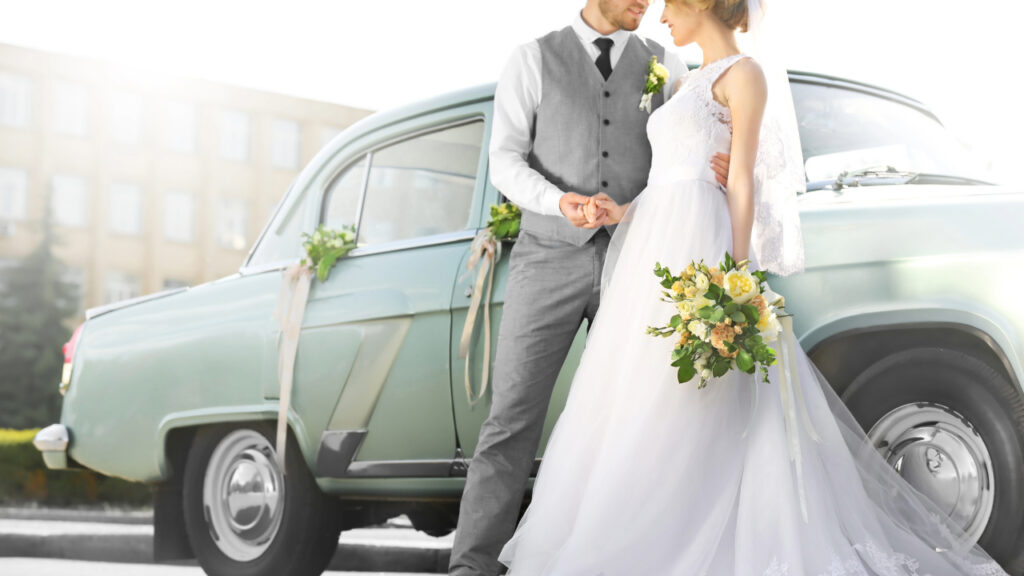Planning a wedding can often feel like navigating a maze of choices, especially when it comes to merging the charm of traditional customs with the allure of modern trends. If you’re currently embroiled in this delightful yet daunting task, you’re certainly not alone. This guide is all about finding that sweet spot between time-honoured traditions and contemporary flair, specifically tailored to European weddings. We’ll delve into various traditional practices from across Europe, each steeped in cultural richness, and explore how they can harmoniously blend with modern elements to create a wedding that’s uniquely yours. So, whether you’re leaning towards a classic ceremony or a trendsetting celebration, or perhaps a mix of both, let’s embark on this journey together to craft a day that perfectly encapsulates your love story.
Remember, your wedding day is a canvas awaiting your personal touch. It’s all about creating memories that resonate with your personal style, values, and cultural heritage. Stay tuned as we explore the enchanting world of European wedding traditions, modern twists, and how to seamlessly weave them into your big day.
First of all: Choosing your wedding style is a personal decision
When it comes to planning a wedding, one of the most fundamental decisions a couple faces is whether to lean towards traditional customs or embrace modern elements. It’s a choice that often sits at the heart of familial discussions. Traditional weddings, steeped in cultural and familial heritage, can carry a sentimental value that many families cherish. However, modern weddings offer a canvas for creativity and personal expression, breaking away from the constraints of convention.
It’s essential to remember that your wedding day is about you and your partner. While family wishes and expectations are important, the final decision should reflect your desires and vision for your special day. Couples should feel empowered to blend traditions with modern touches in a way that genuinely represents their relationship.
Whether it’s a classic church ceremony, a contemporary celebration in a unique venue, or a combination of both, the key is to create an event that resonates with your personal story and values. After all, your wedding is a celebration of your love and commitment to each other, and it should mirror who you are as a couple.
European wedding traditions: A tapestry of time-honoured customs
Europe, with its rich and diverse cultural heritage, offers a myriad of wedding traditions, each unique to its region and reflective of its history.
France: French weddings are known for their emphasis on the unity of two families rather than just the couple. A notable French tradition is « La Noce », a celebratory procession where guests follow the newly-weds to various locations, making as much noise as possible. The croquembouche, a towering confection of cream-filled pastries, often replaces the traditional wedding cake, symbolizing sweetness and unity.
▶️ Read also: Navigating language barriers at a French wedding
Italy: Italian weddings are celebrated for their vibrant atmosphere and striking traditions. The rice throwing ceremony, stemming from Ancient Roman times, is a significant ritual symbolizing fertility and prosperity. « La Tarantella » (📺 watch this video) is a lively folk dance performed at Italian weddings, where guests encircle the couple, dancing faster as the music’s tempo increases. This dance is more than just a festive activity; it’s a symbol of community and joyous celebration.
Spain: Spanish weddings, deeply rooted in Catholic traditions, are known for their lively and colourful celebrations. Unique to Spanish weddings is the tradition of brides wearing black dresses, a symbol of devotion and commitment « til death do us part ». Orange blossoms, representing happiness and a hopeful future, are commonly used in wedding ceremonies. The ‘Seguidillas Manchegas,’ a traditional dance, is often performed, symbolizing good fortune for the couple.
▶️ You may like: Eight Spanish traditions to include in your wedding
Germany: German weddings are rich in quirky and heart-warming traditions. The « Brautentführung » or « abducting the bride » is a humorous custom where the groom must find his bride after she is playfully ‘kidnapped.’ Another tradition, « Polterabend« , involves the breaking of porcelain to ward off evil spirits, symbolizing a strong start to married life. These customs highlight the importance of unity and support within the community.
Sweden: Swedish weddings often include unique practices that emphasize inclusivity and love. One such tradition is where the bride and groom kiss other guests, sharing their happiness with everyone present. Swedish weddings are also known for their lengthy and numerous speeches, reflecting the importance of community and personal connections in Swedish culture.
Austria: Austrian weddings have some similarities to German customs but with their unique twists. A notable tradition is the « Brautschuhversteigerung« , where the bride’s shoe is auctioned, symbolizing the start of the couple’s life together. Another practice is ‘Agape,’ a morning gift from the groom to the bride, which historically served as financial security.
These traditions, rich in history and symbolism, reflect the diverse cultural tapestry of Europe. They offer couples a wealth of inspiration to incorporate into their weddings, whether they seek a ceremony deeply rooted in tradition or one that creatively blends these customs with modern elements.

Modern twists: Innovating tradition with contemporary flair
When it comes to tying the knot, there’s a fresh wave of energy sweeping through wedding traditions. Nowadays, it’s all about mixing the old with the new, creating something that’s uniquely « you ». Think of it as taking the best bits from the past and spicing them up with a modern twist. Couples are getting super creative, putting their own stamp on everything from vows to venues. It’s not just about following the rules; it’s about rewriting them to match your vibe. Whether it’s saying “I do” in a forest instead of a church, or swapping out the classic white cake for something wildly colourful, these modern tweaks are making weddings more personal and unforgettable than ever.
Personalized ceremonies: Modern weddings often break the mould of traditional ceremony formats. Couples are customizing their ceremonies to reflect their personalities and stories. This could include writing their own vows, incorporating non-traditional readings, or having a close friend or family member officiate the wedding. Websites like Offbeat Bride offer a plethora of ideas for personalizing wedding ceremonies.
Unique venues: Traditional church weddings are giving way to celebrations in unconventional locations. Modern couples are opting for venues that reflect their personal style, such as art galleries, rustic barns, urban rooftops, or even underwater locations for the more adventurous.
Here are three unique venues among many in Europe:
- Masseria Calderisi in Italy: A beautifully restored 17th-century farmhouse, now a boutique hotel set among olive groves. It offers a variety of settings for the ceremony, including a large Moroccan tent in the olive groves, perfect for a cozy and intimate celebration.
- Hotel du Cap Eden Roc in Antibes, France: Overlooking the Mediterranean, this venue offers luxury amenities and services, with options to accommodate a range of guest numbers. Michelin-starred cuisine and stunning views make it an ideal choice for a lavish celebration.
- The Natural History Museum in London, UK: This landmark building adds Victorian-era grandeur to your wedding, with options to host the ceremony in various galleries, offering a unique and historical backdrop.
Eco-Friendly Weddings: Sustainability is a growing trend in modern weddings. Couples are making conscious choices to reduce their celebration’s environmental impact, such as using locally-sourced food, digital invitations, and eco-friendly decor. Have a look at our special page.
Technology integration: Modern weddings are embracing technology in various forms. This includes live-streaming the ceremony for distant loved ones, using drones for aerial photography, and creating interactive wedding websites for guests.
Another innovative use of technology is digital invitations and RSVP management. Platforms like Greenvelope offer stylish digital invitations that can match the theme of the wedding while providing a convenient way to manage guest responses and updates.

Cultural Fusion: With more couples coming from diverse backgrounds, modern weddings often feature a fusion of cultural elements. This can be seen in the blending of different culinary traditions, multicultural music playlists, and ceremonial customs from both partners’ heritages.
The beauty of modern weddings lies in their flexibility to incorporate traditional elements in a way that honours heritage while celebrating contemporary values and personal preferences. Whether opting for a traditional, modern, or a blend of both, the key is to create a wedding that resonates with the couple’s unique story and vision.






